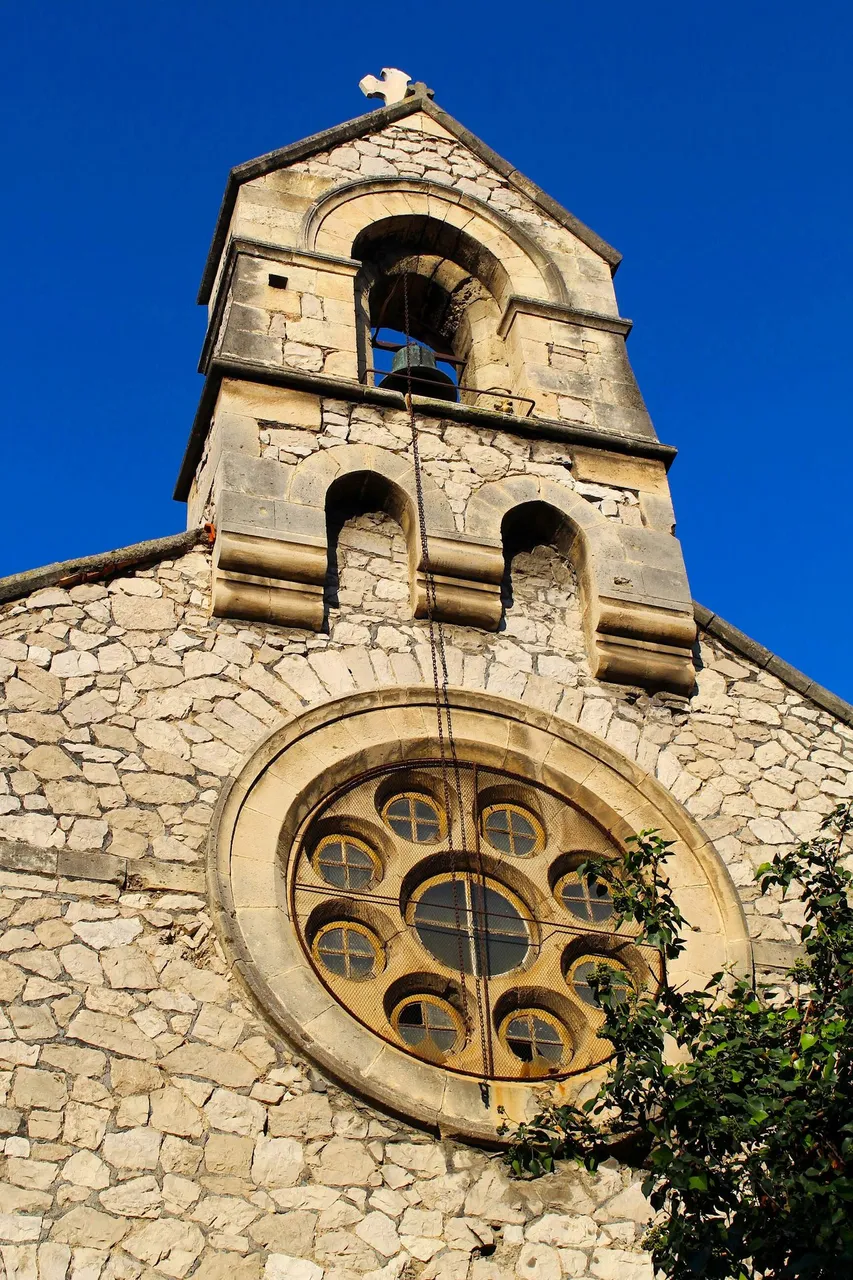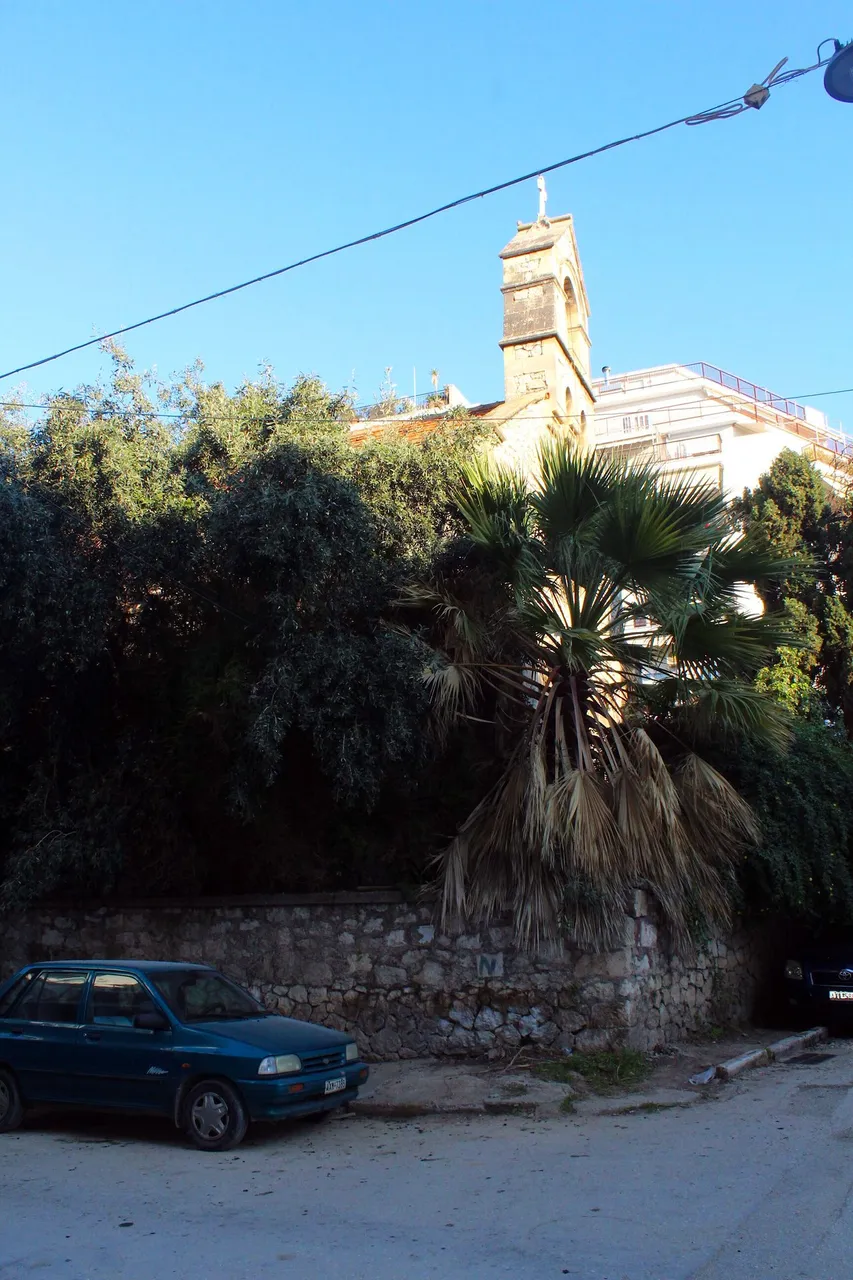| Something new for a change. Or maybe not, it's also a repeat. Well, it's a bit of both. It's new, because it is not an Orthodox church. It's a repeat, because it is another church named after St. Andrew, just like the last one. | Mal was anderes zur Abwechslung. Oder doch Wiederholung. Nunja, etwas von beidem. Es ist neu, weil es keine orthodoxe Kirche ist. Es ist eine Wiederholung, weil es mal wieder eine dem Hlg. Andreas gewidmete Kirche ist, genau wie die letzte. |
|---|

If you're reading this on hive.blog, you probably have to scroll sideways to read the text. For a better experience, you should read it on ecency.com or other frontends.
/
Wer dies auf hive.blog liest, muß wahrscheinlich seitwärts scrollen, um den (deutschen) Text zu lesen. Auf ecency.com (oder anderen Frontends) gibt es dieses Problem nicht.
| Today's church is the St Andrew Anglican Protestant Church (Εκκλησία Άγιος Ανδρέας Αγγλικανικη Προτεσταντικη Εκκλησία), located in the city centre of Patras, close to the port. The exact address is Kapsali 16, Patras 26223 (Καψάλη 16, Πάτρα 262 23). Unlike the other churches I described here, this one is not only un-Orthodox, but also closed. It is fenced & walled off, so you can only walk around it on the public streets. | Heute geht es um die anglikanisch-protestantische Kirche St. Andreas (Εκκλησία Άγιος Ανδρέας Αγγλικανικη Προτεσταντικη Εκκλησία) im Zentrum von Patras, nahe am Hafen. Die genaue Adresse lautet Kapsali 16, Patras 26223 (Καψάλη 16, Πάτρα 262 23). Anders als die anderen hier beschriebenen Kirchen ist diese nicht nur unorthodox, sondern auch geschlossen. Sie ist eingezäunt & daher nur von der öffentlichen Straße aus zu besichtigen. |
|---|

| The church was built on a plot of land gifted to the British community of (raisin?) traders in the 19th century. The foundation stone was layed in 1872, the building completed in 1878. | Die Kirche steht auf einem Grundstück, das im 19. Jh. in Patras lebenden britischen (Rosinen-)Händlern geschenkt wurde. Der Grundstein wurde 1872 gelegt, das Gebäude war 1878 fertig. |
|---|

| Allegedly, it has been used in recent years for various cultural events, but as you can see, it looks rather abandoned. Then again, of course, plants grow quickly in Patras. | Angeblich wurde die Kirche in jüngster Zeit für Kulturveranstaltungen genutzt, aber sie sieht recht verlassen aus. Allerdings wächst alles in Patras ziemlich schnell. |
|---|

| Interestingly, the Greek name here is given as Agios Andreas, not as Agiou Andreou (Αγίου Ανδρέου), as is the case for the Orthodox churches of St. Andrew. Since I don't know much about Greek grammar & writing, I have no idea whether that signifies anything, though. | Interessanterweise wurde der Name auf griechisch hier als Agios Andreas geschrieben, nicht wie bei orthodoxen St.-Andreas-Kirchen üblich als Agiou Andreou (Αγίου Ανδρέου). Da ich nicht viel über griechische Grammatik weiß, habe ich keine Ahnung, was das bedeutet. |
|---|

| The door itself seems to be in a very good state, which might speak for recent use. | Die Tür selbst scheint in gutem Zustand zu sein, was auf Nutzung in letzter Zeit hindeuten könnte. |
|---|

| The entrance area is quite overgrown, though. | Der Eingangsbereich ist jedoch stark zugewachsen. |
|---|

| Also interesting that the windows on the sides show just plain glass. I'm not sure about Anglican churches, but Catholic & Orthodox churches have almost always coloured glass, often with iconography. | Auch interessant, daß die Fenster auf den Seiten aus einfachem Glas sind. Bin mir nicht sicher über anglikanische Kirchen, aber katholische & orthodoxe haben fast immer gefärbtes Glas, oft mit Ikonen. |
|---|

| On 28 October 1940, at 9 a.m., this was the place of the first bombing of Patras by invading Italian forces. This also caused the first casualties among Patras citizens. | Am 28. Oktober 1940 um 9 Uhr fielen dort die ersten Bomben der italienischen Invasoren auf Patras. Dabei gab es auch die ersten Kriegstoten unter Bürgern von Patras. |
|---|

| This is the northern end of the church. Here, you can actually see what I would expect for all the windows. Because of the wall & the plants, you can hardly see anything of the church from the western side. So, I walked around until I came back to the southern side with the bell tower. | Dies zeigt das nördliche Ende der Kirche. So wie hier würde ich alle Fenster erwarten. Wegen der Mauer & der Pflanzen kann man von der Westseite so gut wie nichts sehen. Also ging ich wieder bis ans Südende mit dem Glockenturm. |
|---|

| The chain to ring the bell is still there, but doesn't reach to the ground. Maybe they opened the windows to use it, though. Overall, there is not much to see, but what you can see is quite interesting. I particularly like the natural stone construction. & since it is only a few minutes walk from the actual city centre, it's definitely worth the visit, if only for seeing the Greek interpretation of an Anglican style church. & now, just a few more pics: | Die Kette, um die Glocke zu läuten ist noch da, aber reicht nicht bis zum Boden. Vielleicht wurde sie durch das geöffnete Fenster benutzt. Insgesamt kann man nicht viel sehen, aber das, was man sieht, ist doch interessant, für mich v.a. die Natursteinkonstruktion. & da sie nur wenige Minuten Fußweg vom Zentrum gelegen ist, kann man sie sich mal ansehen, & sei es nur, um die griechische Interpretation einer anglikanischen Kirche zu sehen. & jetzt nur noch ein paar Bilder: |
|---|






